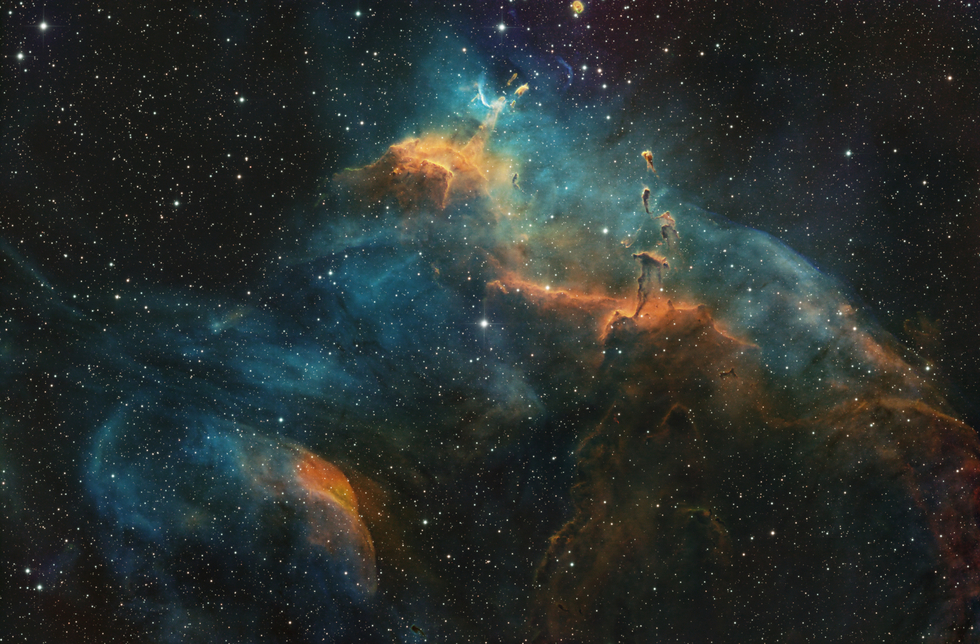GUM 37
GUM 37
GUM 37: The Southern Tadpole Nebula
GUM 37, also known as RCW 54c, is a celestial object located in the constellation Carina. It's classified as a diffuse HII emission region, essentially a vast cloud of ionized hydrogen gas.
Key Characteristics:
Location: Southern Hemisphere constellation Carina
Type: Diffuse HII emission region
Associated with: NGC 3572 star cluster
Notable Features: Contains the "Southern Tadpoles"
Visual Appearance:
GUM 37 is often overlooked due to the proximity of the more famous Statue of Liberty Nebula. However, it's a captivating object in its own right. Its most distinctive feature is the "Southern Tadpoles," a group of dark nebulae that resemble tadpoles. These dark regions are actually dense pockets of gas and dust within the larger emission nebula.
Formation and Significance:
GUM 37 is a stellar nursery, where new stars are born from the collapsing gas and dust. The intense radiation from the nearby NGC 3572 star cluster is ionizing the hydrogen gas in GUM 37, causing it to glow. The study of such nebulae provides valuable insights into the process of star formation and the evolution of galaxies.
GUM 37, also known as RCW 54c, is a celestial object located in the constellation Carina. It's classified as a diffuse HII emission region, essentially a vast cloud of ionized hydrogen gas.
Key Characteristics:
Location: Southern Hemisphere constellation Carina
Type: Diffuse HII emission region
Associated with: NGC 3572 star cluster
Notable Features: Contains the "Southern Tadpoles"
Visual Appearance:
GUM 37 is often overlooked due to the proximity of the more famous Statue of Liberty Nebula. However, it's a captivating object in its own right. Its most distinctive feature is the "Southern Tadpoles," a group of dark nebulae that resemble tadpoles. These dark regions are actually dense pockets of gas and dust within the larger emission nebula.
Formation and Significance:
GUM 37 is a stellar nursery, where new stars are born from the collapsing gas and dust. The intense radiation from the nearby NGC 3572 star cluster is ionizing the hydrogen gas in GUM 37, causing it to glow. The study of such nebulae provides valuable insights into the process of star formation and the evolution of galaxies.
SPECIFICATIONS
Telescope
CHI-1 CMOS
Camera
QHY 600m
Location
Río Hurtado, Coquimbo Region, Chile
Date of observation
Bundle
Filters
SHO
Processing
Pixinsight



